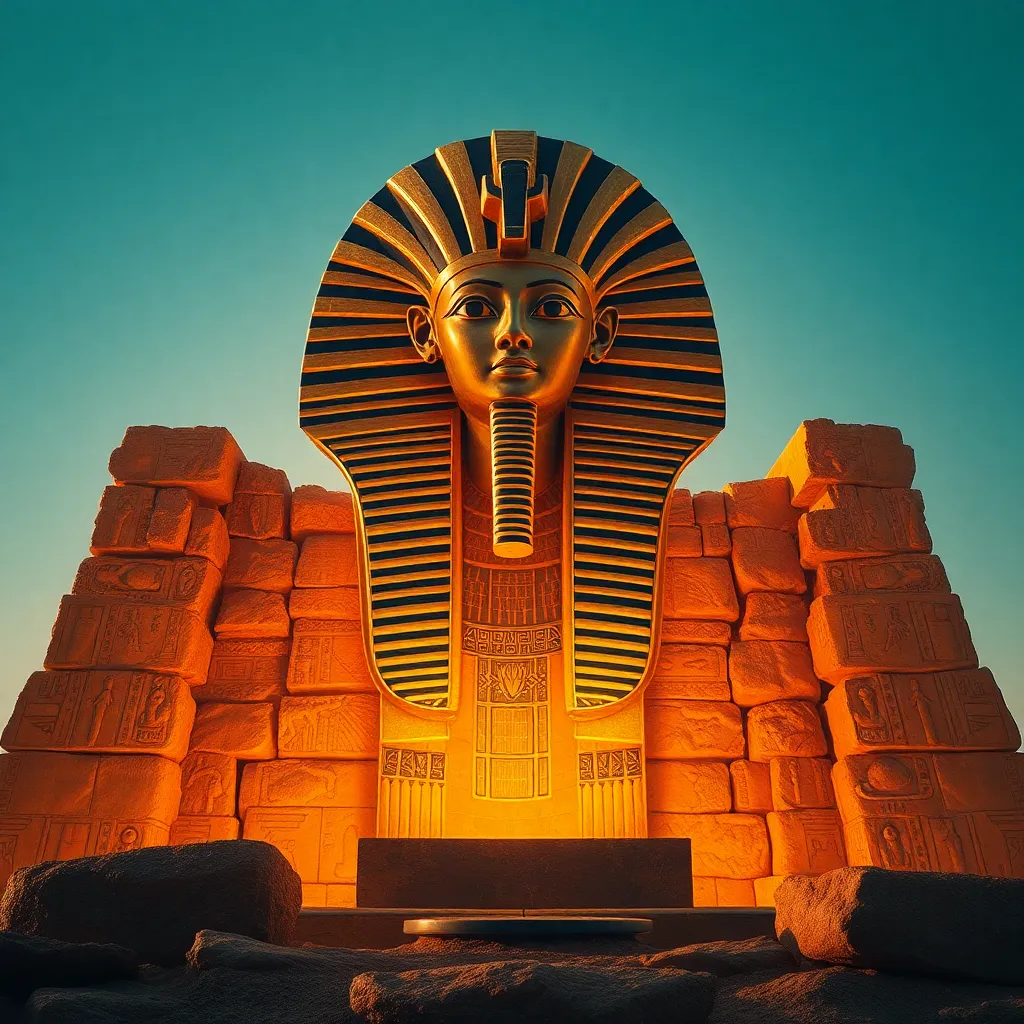The Aten and the Concept of Divine Order
I. Introduction
The Aten is an essential concept in Ancient Egyptian religion, representing not just a deity but also a profound aspect of the Egyptian understanding of divinity and the cosmos. The Aten is often depicted as the sun disk, radiating life-giving rays that symbolize light and sustenance. Its emergence marked a pivotal shift in the religious landscape of Ancient Egypt.
Central to understanding the Aten is the concept of Ma’at, which embodies truth, balance, order, harmony, and justice. The principles of Ma’at were crucial for maintaining the universe’s balance and ensuring the pharaoh’s divine right to rule. The Aten’s significance lies in its embodiment of these principles, merging solar worship with the foundational concepts of order in society.
II. Historical Context of the Aten
The Aten emerged prominently during the reign of Pharaoh Akhenaten, who is credited with shifting Egypt from traditional polytheism to a form of monotheism centered around the worship of the Aten. This was not merely a religious reform but a radical transformation of Egyptian society and culture.
- Emergence of the Aten: Akhenaten’s reign (c. 1353-1336 BCE) saw the Aten elevated above all other deities, culminating in the establishment of Akhetaten (modern-day Amarna) as a center for its worship.
- Shift from Polytheism: The transition to Atenism involved the denouncement of other gods, promoting the Aten as the sole deity deserving of worship.
- Socio-Political Landscape: This shift was not only theological but also a strategic move to consolidate power and diminish the influence of the priesthood of Amun, who held significant political sway.
III. Theological Significance of the Aten
The Aten is depicted as a singular deity, often represented as a sun disk with rays extending towards the earth, ending in hands that offer the ankh, the symbol of life. This imagery conveys the Aten’s role as a giver of life and sustenance.
- Depiction of the Aten: Unlike traditional gods, the Aten was less anthropomorphic and more abstract, emphasizing its cosmic and universal qualities.
- Creation Relationship: The Aten is closely associated with the creation of the world, viewed as the source from which all life emanates.
- Symbol of Light and Life: The Aten’s rays symbolize illumination and vitality, reinforcing its role as a nurturing force in the universe.
IV. The Concept of Ma’at and Divine Order
Ma’at is fundamental to Ancient Egyptian civilization, representing the principles of order and balance necessary for the stability of the cosmos and society. It guided not only religious practices but also legal and moral frameworks.
- Definition and Importance: Ma’at signifies truth and cosmic order, embodying the principles that a pharaoh must uphold to maintain harmony.
- Pharaoh’s Role: The pharaoh was seen as the earthly embodiment of Ma’at, responsible for upholding its principles through just governance and religious observance.
- Aten as Embodiment: The Aten reflects the essence of Ma’at through its representation of light and order, symbolizing the divine force that sustains harmony in the universe.
V. Artistic Representations of the Aten
The artistic expressions related to the Aten present a stark contrast to earlier depictions of Egyptian deities. Art during Akhenaten’s reign underwent significant changes, characterized by a more naturalistic style.
- Iconography and Symbolism: Aten is often shown as a sun disk with outstretched rays, highlighting its benevolent nature.
- Comparison with Traditional Deities: Traditional gods were often depicted with human forms and attributes; in contrast, the Aten’s representation is less anthropocentric, emphasizing its abstract and universal qualities.
- Artistic Expression Role: Art became a tool for propagating the beliefs of Atenism, reflecting the new religious focus and the pharaoh’s divine connection to the Aten.
VI. The Aten and Religious Reforms Under Akhenaten
Akhenaten’s reign is marked by significant religious reforms centered around the Aten, which reshaped the spiritual framework of Ancient Egypt dramatically.
- Central Deity Establishment: The Aten was declared the principal god, leading to the closure of many temples dedicated to other deities.
- Changes in Practices and Architecture: Religious practices shifted to emphasize the Aten, with new temple designs and open-air worship spaces reflecting the sun’s significance.
- Reactions from Priesthood: The shift provoked strong opposition from the traditional priesthood, particularly the priests of Amun, leading to tensions and conflicts.
VII. The Decline of Atenism and Restoration of Traditional Beliefs
Following Akhenaten’s death, the worship of the Aten experienced a significant decline as traditional polytheistic practices were restored.
- Factors Leading to Decline: The abrupt changes and the alienation of the populace from Atenism, coupled with the political instability, contributed to the decline.
- Resurgence of Polytheism: Successors to Akhenaten reinstated the worship of traditional gods, particularly Amun, restoring the established religious order.
- Long-term Impacts: The transition back to polytheism influenced Egyptian religion, resulting in a blended understanding of divinity that included aspects of both Atenism and traditional beliefs.
VIII. Conclusion
The Aten holds a significant place in the context of divine order, representing a unique intersection of theology, politics, and art in Ancient Egypt. Its rise and fall reflect broader themes of power, belief, and cultural transformation.
In modern interpretations of Ancient Egyptian religion, the Aten is often seen as a precursor to monotheistic thought, challenging scholars to consider the complexities of divine representation and worship. The principles of Ma’at continue to resonate in contemporary discussions of spirituality and governance, highlighting the enduring legacy of the Aten.




